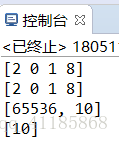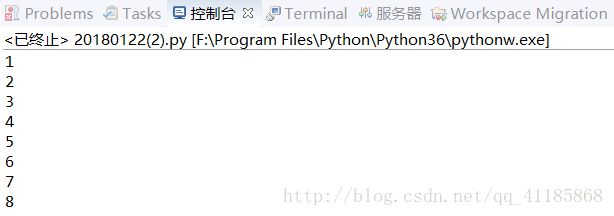TF学习:Tensorflow基础案例、经典案例集合——基于python编程代码的实现
TF学习:Tensorflow基础案例、经典案例集合——基于python编程代码的实现
目录
Tensorflow的使用入门
1、TF:使用Tensorflow输出一句话
2、TF实现加法
3、TF实现乘法
4、TF实现计算功能
5、TF:Tensorflow完成一次线性函数计算
Tensorflow的基础案例
1、TF根据三维数据拟合平面
Tensorflow的经典案例
相关文章
TF学习——DL框架之Tensorflow:Tensorflow的简介、安装、使用方法之详细攻略
Tensorflow的使用入门
1、TF:使用Tensorflow输出一句话
#TF:使用Tensorflow输出一句话
import tensorflow as tf
import numpy as np
greeting = tf.constant('Hello Google Tensorflow!')
sess = tf.Session() #启动一个会话
result = sess.run(greeting) #使用会话执行greeting计算模块
print(result)
sess.close() #关闭会话,这是一种显式关闭会话的方式![]()
2、TF实现加法
张量和图的两种方式实现:声明两个常量 a 和 b,并定义一个加法运算。先定义一张图,然后运行它,
# -*- coding: utf-8 -*-
#1、张量和图的两种方式实现:声明两个常量 a 和 b,并定义一个加法运算。先定义一张图,然后运行它,
import tensorflow as tf
import os
import numpy as np
os.environ['TF_CPP_MIN_LOG_LEVEL'] = '2'
#T1
a=tf.constant([1,0,1,4])
b=tf.constant([ 1 , 0 , 0 , 4 ])
result=a+b
sess=tf. Session ()
print (sess.run(result))
sess.close
#T2
with tf.Session() as sess:
a=tf.constant([ 1 , 0 , 1 , 4 ])
b=tf.constant([ 1 , 0 , 0 , 4 ])
result=a+b
print (sess.run(result))
#2、常量和变量
#TensorFlow 中最基本的单位是常量(Constant)、变量(Variable)和占位符(Placeholder)。常量定义后值和维度不可变,变量定义后值可变而维度不可变。在神经网络中,变量一般可作为储存权重和其他信息的矩阵,而常量可作为储存超参数或其他结构信息的变量。下面我们分别定义了常量与变量
#声明了不同的常量(tf.constant())
a = tf.constant( 2 , tf.int16) #声明了不同的整数型数据
b = tf.constant( 4 , tf.float32) #声明了不同的浮点型数据
c = tf.constant( 8 , tf.float32)
#声明了不同的变量(tf.Variable())
d = tf. Variable ( 2 , tf.int16)
e = tf. Variable ( 4 , tf.float32)
f = tf. Variable ( 8 , tf.float32)
g = tf.constant(np.zeros(shape=( 2 , 2 ), dtype=np.float32))#声明结合了 TensorFlow 和 Numpy
h = tf.zeros([ 11 ], tf.int16) #产生全是0的矩阵
i = tf.ones([ 2 , 2 ], tf.float32) #产生全是 1的矩阵
j = tf.zeros([ 1000 , 4 , 3 ], tf.float64)
k = tf. Variable (tf.zeros([ 2 , 2 ], tf.float32))
l = tf. Variable (tf.zeros([ 5 , 6 , 5 ], tf.float32))
#声明一个 2 行 3 列的变量矩阵,该变量的值服从标准差为 1 的正态分布,并随机生成
w1=tf.Variable(tf.random_normal([2,3],stddev=1,seed=1))
#TensorFlow 还有 tf.truncated_normal() 函数,即截断正态分布随机数,它只保留 [mean-2*stddev,mean+2*stddev] 范围内的随机数
#案例应用:应用变量来定义神经网络中的权重矩阵和偏置项向量
weights = tf.Variable(tf.truncated_normal([256 * 256, 10]))
biases = tf. Variable (tf.zeros([10]))
print (weights.get_shape().as_list())
print (biases.get_shape().as_list())
3、TF实现乘法
Tensorflow之session会话的使用,定义两个矩阵,两种方法输出2个矩阵相乘的结果
import tensorflow as tf
matrix1 = tf.constant([[3, 20]])
matrix2 = tf.constant([[6],
[100]])
product = tf.matmul(matrix1, matrix2)
# method 1,常规方法
sess = tf.Session()
result = sess.run(product)
print(result)
sess.close()
# # method 2,with方法
# with tf.Session() as sess: #
# result2 = sess.run(product)
# print(result2)
4、TF实现计算功能
TF:Tensorflow定义变量+常量,实现输出计数功能
输出结果
代码设计
#TF:Tensorflow定义变量+常量,实现输出计数功能
import tensorflow as tf
state = tf.Variable(0, name='Parameter_name_counter')
#print(state.name)
one = tf.constant(1)
new_value = tf.add(state, one)
update = tf.assign(state, new_value)
init = tf.global_variables_initializer()
with tf.Session() as sess:
sess.run(init)
for _ in range(8):
sess.run(update)
print(sess.run(state))
5、TF:Tensorflow完成一次线性函数计算
#TF:Tensorflow完成一次线性函数计算
#思路:TF像搭积木一样将各个不同的计算模块拼接成流程图,完成一次线性函数的计算,并在一个隐式会话中执行。
matrix1 = tf.constant([[3., 3.]]) #声明matrix1为TF的一个1*2的行向量
matrix2 = tf.constant([[2.],[2.]]) #声明matrix2为TF的一个2*1的列向量
product = tf.matmul(matrix1, matrix2) #两个算子相乘,作为新算例
linear = tf.add(product, tf.constant(2.0)) #将product与一个标量2求和拼接.作为最终的linear算例
#直接在会话中执行linear算例,相当于将上面所有的单独算例拼接成流程图来执行
with tf.Session() as sess:
result = sess.run(linear)
print(result)
Tensorflow的基础案例
1、TF根据三维数据拟合平面
Python 程序生成了一些三维数据, 然后用一个平面拟合它.
import tensorflow as tf
import numpy as np
# 使用 NumPy 生成假数据(phony data), 总共 100 个点.
x_data = np.float32(np.random.rand(2, 100)) # 随机输入
y_data = np.dot([0.100, 0.200], x_data) + 0.300
# 构造一个线性模型
#
b = tf.Variable(tf.zeros([1]))
W = tf.Variable(tf.random_uniform([1, 2], -1.0, 1.0))
y = tf.matmul(W, x_data) + b
# 最小化方差
loss = tf.reduce_mean(tf.square(y - y_data))
optimizer = tf.train.GradientDescentOptimizer(0.5)
train = optimizer.minimize(loss)
# 初始化变量
init = tf.initialize_all_variables()
# 启动图 (graph)
sess = tf.Session()
sess.run(init)
# 拟合平面
for step in xrange(0, 201):
sess.run(train)
if step % 20 == 0:
print step, sess.run(W), sess.run(b)
# 得到最佳拟合结果 W: [[0.100 0.200]], b: [0.300]
Tensorflow的经典案例
后期更新……



